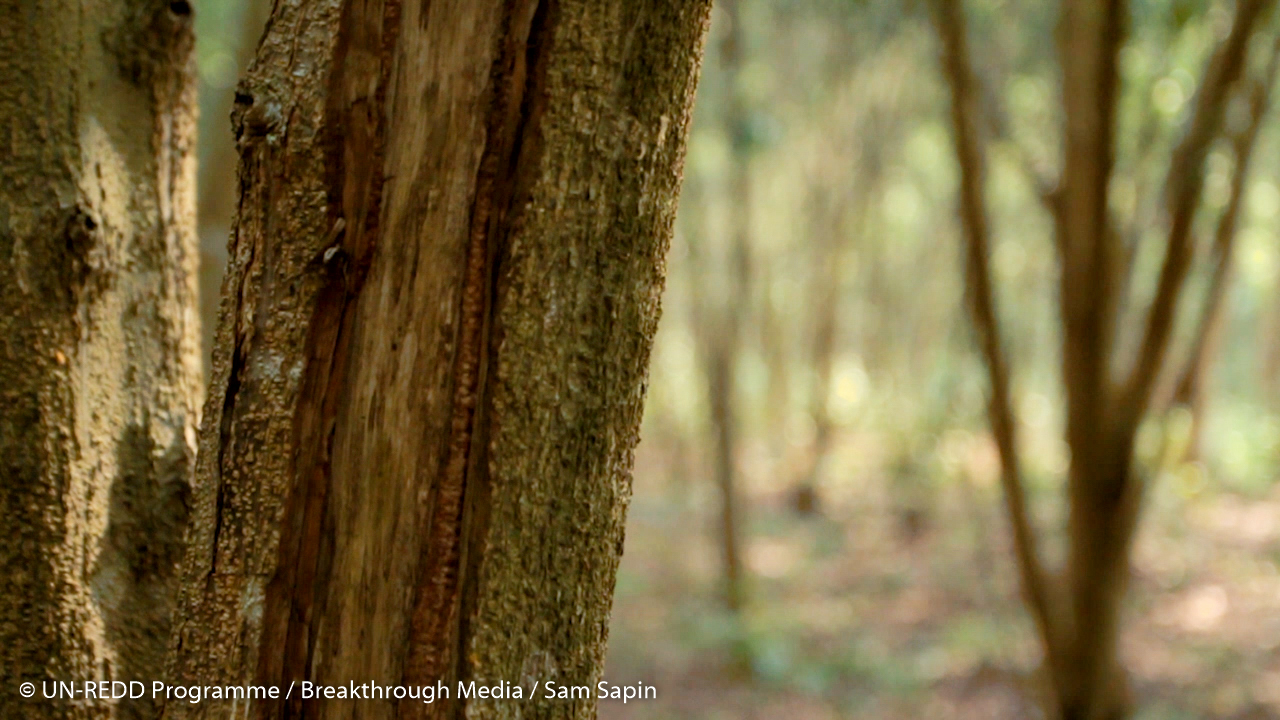28 January 2018
Figures indicate historical increase in deforestation since 2010
Under the auspice of the Sustainable Development Department of the Ministry of Environment and Sustainable Development, the DRC has submitted a national Forest Reference Emission Level (FREL) to the UNFCCC, for the duration 2000-2014.
Following IPPC recommendations , the DRC has initiated an operational and comprehensive national forest monitoring system. As a part of this a forest reference emission level was submitted to the UNFCCC– which also satisfies intermediate milestone 3.h. from the CAFI/DRC LOI, which foresees the communication of Forest Reference Emission Levels (FRELs/FRLs) to UNFCCC for the territory covering the three former priority provinces (Bandundu, Equateur, Orientale).
The DRC has decided to focus its first FREL, collated using Landsat satellite imagery, on deforestation; defined as the conversion of forest land to non-forest land. The main driver was identified as shifting cultivation, including slash-and-burn farming, artisanal logging and charcoal / fuel wood collection.
CO2 emissions were estimated at 351.41 MtCO2e ± 38.23 MtCO2e for the period 2000-2010 and 829.56 MtCO2e ± 84.71 MtCO2e for the period 2010-2014.
Figures for the years 2015-2019 were estimated by extrapolating historical emissions and adjusting them in line with the indirect causes of deforestation (population growth and infrastructure development); which have a multiplier effect on direct causes. It is anticipated that these will evolve according to a business-as-usual scenario and for the period 2015-2019 are estimated to reach 1,326 MtCO2e.
What do these figures mean? While originally considered a high forest - low deforestation country, the DRC has started a transition to high deforestation.
This represents a challenge for a country, which has committed in its National REDD + Framework Strategy to stabilize the forest cover rate to 63.5%, starting from 67% in 2000.
Affected by the paradox of abundance, and despite its immense natural resources, DRC still experiences high levels of poverty. Given the natural wealth and potential for development, the challenge facing the country is to decouple the necessary economic growth from deforestation.
Engaged in the REDD+ process since 2009, the DRC joined CAFI in September 2015. This marked the start of major investments aimed at addressing drivers of deforestation. As part of this partnership, CAFI granted US$ 10 million to finalize the national forest monitoring system including the development of the forest reference emission level.
Reference levels are expressed as tonnes of CO2 equivalent per year for a reference period against which the emissions and removals from a results period will be compared. Thus, reference levels serve as benchmarks for assessing each country’s performance in implementing REDD+ activities.
Each submission of a proposed reference level, in the context of results-based payments, shall be subject to a technical assessment. Each submission is technically evaluated by an assessment team in accordance with the procedures and time frames established by the COP. Having an assessed national reference level in place is one of the requirements in order to be eligible for results-based payments.
The construction of the FREL was conducted through a series of technical and strategic consultations led by the DRC's Ministry of Environment and Sustainable Development (MEDD), through its Sustainable Development Departments (DDD) and Forest Inventory and Development (DIAF).
Consultations met under the framework of a Technical Platform of Concertation (TPC) - responsible for supporting the implementation of the DRC National Forest Monitoring System, and involved representatives from various technical partners including FAO, the Japan Agency for International Cooperation (JICA) and the Wildlife Conservation Society (WCS). Other stakeholders in the TPC include REDD + project holders (inc. CAFI), and representatives of universities and research centers.

